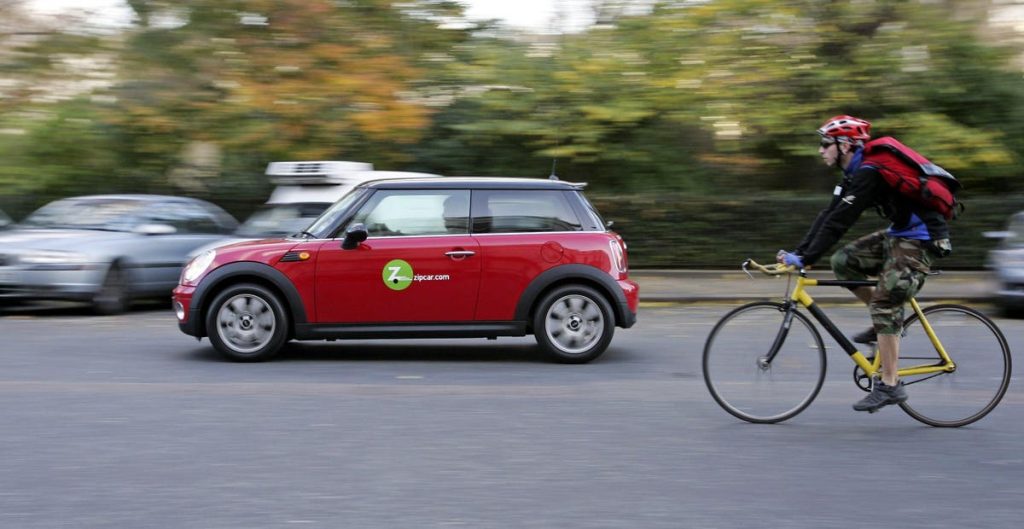“The stick is the primary answer to reducing cars in cities,” said a former London transport leader today. Jon Burke also said that “alternative transport options are also a part of this process,” albeit a smaller one, he added.
Until 2021, Burke was the London borough of Hackney’s cabinet member for energy, waste, transport and the public realm. He was the elected councillor who led Hackney’s push for more active travel and for motor vehicle restraint, installing one of London’s most ambitious low traffic neighborhoods, or LTNs.
Carrots are not enough to get drivers out of their cars, agree many academics
“The most effective thing we can do to reduce cars in cities is to use carrots and sticks to reduce car use and increase public transport, walking, and cycling,” said Kim Nicholas, an American climate scientist.
“But carrots alone are not sufficient to overcome the entrenched infrastructure and incentives, which today favors car use. So to really move the needle and to get people out of cars and using other forms of transport—which is what we have to do to reduce emissions for climate change, to protect public health to make cities and streets safer and more livable—we have to massively reduce car use along with increasing sustainable mobility.”
In a paper published in Case Studies on Transport Policy, Nicholas and a colleague ranked 12 measures which have been proven to reduce motor vehicle trips. Their literature search analyzed car-taming techniques published in more than 800 separate studies.
Congestion charging
The European cities featuring in the research included Nottingham, England; Copenhagen, Denmark; and Bologna, Italy.
Rome, Italy, was highlighted for a 20% reduction in motor traffic thanks to restricting entry to residents only. Fines are plowed into the city’s public transport system.
But London in England was found to have implemented the most effective measure. The U.K.’s capital city reduced city center traffic by 33% following the February 2003 introduction of a congestion charge. It can now cost motorists more than $20 to drive through London’s congestion charge zone.
Nicholas is an associate professor at the Lund University Center for Sustainability Studies in Sweden. Along with Paula Kuss, from the same institution, she produced her paper to rate the effectiveness of different initiatives that have been introduced to reduce urban car use.
Over a Zoom call, Nicholas told me she believed congestion charging is the most effective measure because it makes the “cost of driving visible.”
She added that currently, many of the costs of motoring are hidden.
“Society pays a lot of the costs of driving in the form of pollution and traffic and delays and accidents and health and climate change,” she said.
“We need to make it more visible that the polluters should be paying for using a polluting technology.”
After four years of delays, congestion pricing will be introduced in parts of New York’s Manhattan next year. However, neighbouring New Jersey is seeking to block the plan through legal action, reported Bloomberg last month.
Electric vehicles don’t pollute at source, so should they be exempt from congestion charging?
“It makes sense to have incentives to switch to fossil-free cars,” agreed Nicholas.
“But we also need to be thinking the best car is a bicycle or a bus or a train or walking or not a car at all. We must prioritize people, not cars.”
Motor vehicles—no matter how they are powered—have other downsides for cities, including being a principal cause of stress-inducing noise pollution and a leading cause of trauma and death.
According to Nicholas, car use is also responsible for the “widening gap between rich and poor urban residents.”
Cars, she said, were “sometimes necessary for people’s mobility and social inclusion needs, not least those with disabilities” but that “car-centric cities particularly disadvantage the already-marginalized.”
In the U.K., women, young and older people, those from minority communities, and disabled people are concentrated in the lowest-income households, of which 40% do not have access to cars. In contrast, nearly 90% of the highest-income households own at least one car.
And it’s wealthier drivers who are mainly driving the surge in electric car sales.
“Despite the slow migration to electric-powered cars, consumer trends make driving even more wasteful and unequal,” said Nicholas.
“The emissions saved from electric cars have been more than canceled out by the increase in gas-guzzling Sport Utility Vehicles (SUVs).”
Creating car-free streets and providing protected cycleways lowered car use in city centers by up to 20%. Other measures in the top 12 include workplace parking levies, car clubs to reduce individual ownership of cars, and technologies such as transit apps.
After congestion charging, the most effective means to reduce urban motor traffic, found Nicholas and Kuss, was the removal of car parking places.
“In several European cities, regulations to remove parking spaces and alter traffic routes–in many cases, replacing the space formerly dedicated to cars with car-free streets, bike lanes, and walkways—has proved highly successful,” states the pair’s study.
“For example, Oslo’s replacement of parking spaces with walkable car-free streets and bike lanes was found to have reduced car usage in the center of the Norwegian capital by up to 19%.”
Protest
In 2014, Nicholas attended a climate protest and went viral on social media with a hand-painted poster that stated: “It’s warming. It’s us. We’re sure. It’s bad. We can fix it.”
Originally from Sonoma, California, the world-famous grape-growing valley, her Ph.D. was on the impact of climate change on the wine industry. She has been based in Sweden since 2010.
Her sustainability brief means she often focuses on the harmful impacts of mass motoring.
Read the full article here










